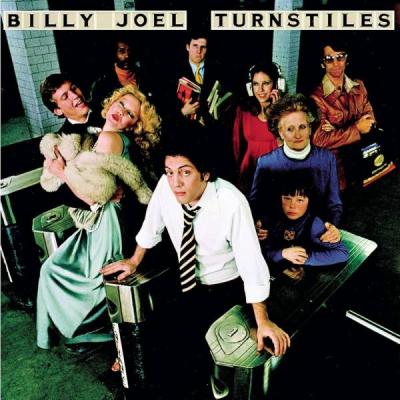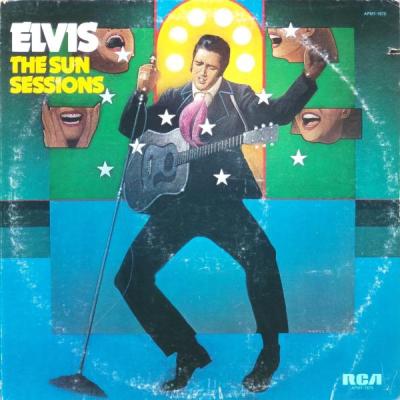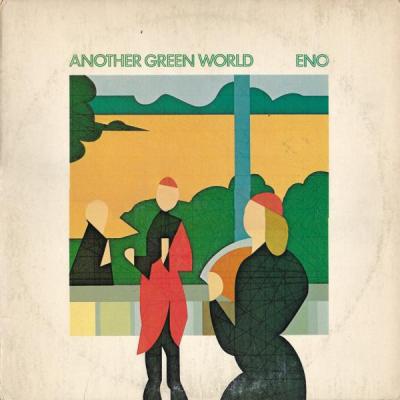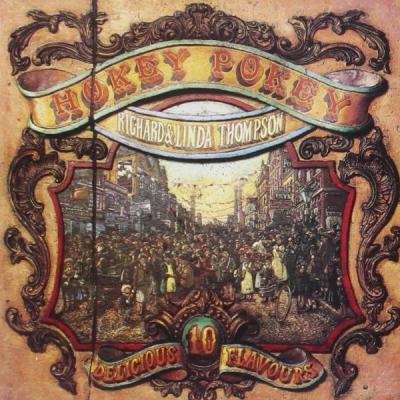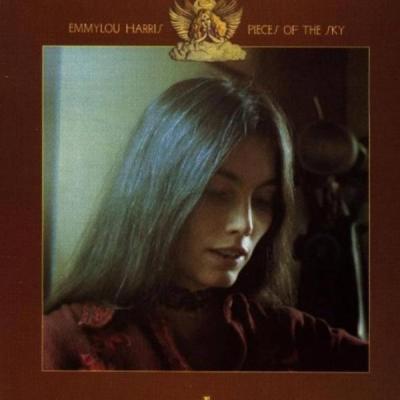


Johnny Cash: With His Hot and Blue Guitar
Album #13 - October 1957
Episode date - August 9, 2023
The scope of Johnny Cash’s music may not have been particularly wide, but its depth was unfathomable.
Cash knew what he could do well, and he stuck to it, over the course of fifty years and even more albums. “Johnny Cash with his Hot Blue Guitar” is his very first album release and it provided the blueprint for all that followed. There were train songs, gospel songs, prison songs, country songs and most importantly, hit songs. Cash penned five of the twelve that appear here, and three of those have become perennial hits (“Cry, Cry, Cry”, “I Walk the Line” and “Folsom Prison Blues”) that likely will not ever fade away.
As for personnel, there are no surprises here, as every track features Johnny Cash and The Tennessee Two, which consisted of Luther Perkins on guitar and Marshall Grant on bass, the same team that would accompany him for every performance (adding drummer W.S. Holland in 1959) until Perkins’ death in 1968. Drummers with no sense of history may be quite surprised that early rock and rollers had little to no use for them. Country music in particular shunned drummers, and since ‘country-western’ music was such a huge influence on the development of rock and roll (and said development happened mainly in Tennessee and its surrounding area), it’s no surprise that drummers were persona non grata until the likes of Chuck Berry, Little Richard and other R&B artists changed things.
Right from the get-go, it was obvious that Johnny Cash was a strange bird when compared to whatever else represented the mainstream. For so many reasons, he stood out as an exception to virtually every rule. His vocal range was minimal at best, and his delivery was shaky, but there was an inherent presence that made the shakiness a strength rather than a weakness. He was a big man who may have appeared threatening, were it not for the fact that he sounded vulnerable and, more importantly, incredibly honest. Cash could not help but sound trustworthy to his audience, and this lent him not only credibility but star power. Most singers, especially the great ones, sounded like they were trying to get over on you. Johnny Cash sounded like he was talking to you from the pit of his heart.
Like Elvis Presley, Johnny Cash came to Sun Studios in Memphis, Tennessee with no good idea of how he might present himself to the public. Cash fancied himself a gospel singer, but Sun president Sam Phillips thought otherwise. After listening to Cash audition for the better part of an hour, Phillips sent him home, but offering the prospect of a contract if he could return with a few commercial songs. The elemental truth is apparent in the hit singles that Cash submitted when he returned - “Cry, Cry, Cry” b/w “Hey Porter”, “Folsom Prison Blues” b/w “So Doggone Lonesome” and “I Walk the Line” b/w “Get Rhythm” were released in quick succession. Johnny Cash became a star and the heir apparent to Elvis Presley, who had moved on to RCA Records. Due to Cash’s newfound national renown, Sun decided to enter the album market. “With His Hot Blue Guitar” became the label’s very first long-playing release. In less than a year, Cash would be gone as well, leaving Sun for Columbia Records.
Featured Tracks
Rock Island Line
I Heard That) Lonesome Whistle
Country Boy
If the Good Lord’s Willing
Cry! Cry! Cry!
Remember Me (I’m the One Who Loves You)
So Doggone Lonesome
I Was There When It Happened
I Walk the Line
Wreck of the Old 97
October 1957 – Billboard Did Not Chart
Related Shows
- 1 of 19
- ››


